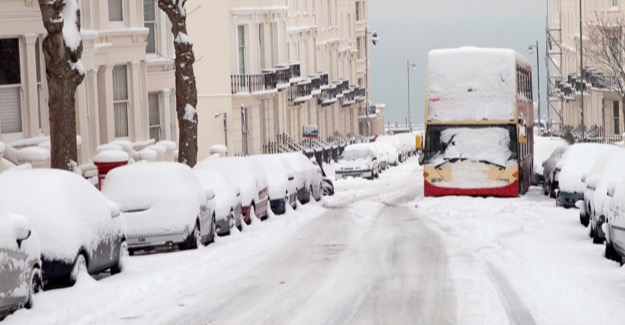Extreme weather conspires against drivers
A combination of more frequent and more extreme weather events will mean drivers having to change their habits and expectations.
A report for the RAC Foundation concludes that although councils and the Highways Agency responded well to the recent periods of snow and ice, changing weather patterns mean strategy will have to shift from one of trying to change the conditions to one of coping with them.
Ploughing On – written by Brian Smith, a former director of Environment and Transport at Cambridgeshire County Council and member of the government-commissioned Quarmby Winter Resilience Review in 2010 – concludes that the official response to the extensive ice and snow seen in England and Wales in January 2013 (and again in parts of the South East of England in early March) was generally good.
It says there was no repeat of the shortage of salt seen in recent years.
However the report notes that at temperatures of -7C and below, the effectiveness of salt decreases and high winds mean snow drifts faster than it can be cleared.
Problems were exacerbated by the heavy rainfall of 2012. Surface water and field run-off quickly froze as temperatures dropped. Then as the snow melted there was flooding as a result of the already saturated ground.
The review also suggests that despite common perceptions, much of continental Europe also suffers disruption from snow and ice. It cites evidence from northern France in the second week of March where the authorities banned heavy lorries from the roads, effectively stopping Channel crossings for freight vehicles and creating difficulties in Kent.
Professor Stephen Glaister, director of the RAC Foundation, said:
“For hundreds of drivers who were trapped in nightmare conditions it will be hard to believe, but this report concludes that by and large the authorities have significantly upped their games in recent years.
“The reality is that the climate is an evolving beast. No longer can we regard periods of severe weather as isolated incidents. They seem to be getting more frequent and more extreme and the impact of one compounds the effects of another.
“When we are warm and snug in our modern cars it is tempting to think we are immune from the elements and have the technological resources to deal with whatever nature might throw at us – but the experience is that we do not. We need to consider revising our view of what is ‘normal’. As the climate appears to change we should not confuse extreme weather with rare weather.
“As ever there is a balance to be struck between need, expectations and expense. Councils could put a gritter and a snow plough round every corner if that is what the public desire but the trade off is greatly reduced expenditure on other essential services.”
The report also concluded that:
- Highways authorities (local and also the Highways Agency) were generally well prepared for the onset of winter
- The authorities had broadly implemented the recommendations outlined in the Government-commissioned winter resilience review (and subsequent audit) carried out in the wake of the bad winters of 2008/9 and 2009/10
- There was no shortage of salt
- Uniformly, local authorities had not cut back on winter services spending despite overall reductions in their budgets
- Drivers need more advice on the potential benefits of winter tyres and ‘add-ons’ such as snow socks and snow chains
- Drivers also need to be reminded of the importance of simple measures such as maintaining adequate tread depth on their normal tyres
- As part of its review of the winter weather the Highways Agency should consider the case for more removable sections of central reservation barriers to enable snow ploughs and gritters easier access to the points where they are needed
- While there is evidence many drivers change their travel plans in the light of weather warnings, there are still many who do not
Ploughing On was commissioned to study the response to the extreme weather that hit much of England and Wales in the last two weeks of January 2013. Brian Smith then carried out further work – which is included in the report as an addendum – in light of the severe conditions that hit parts of the South East around 11 & 12 March. The report does not include analysis of the extreme weather events that were experienced in the run up to Easter.
The report took evidence from the Highways Agency, 32 local authorities in England and Wales, Boots, Asda, the RAC breakdown business and 13 motoring clubs across Europe.
ENDS
Contacts:
RAC Foundation:
Philip Gomm – Head of External Communications
[email protected] | 020 7747 3445 | 020 7389 0601 (ISDN) | 07711 776448
Notes to editors:
The RAC Foundation is a transport policy and research organisation that explores the economic, mobility, safety and environmental issues relating to roads and their users. The Foundation publishes independent and authoritative research with which it promotes informed debate and advocates policy in the interest of the responsible motorist.
The full report is available to download under embargo by following this link:
The report will be on the Foundation website – www.racfoundation.org – from the date of publication.
Brian Smith was formerly the director of Environment and Transport at Cambridgeshire County Council. Following retirement he was a member of the panel chaired by David Quarmby – chairman of the RAC Foundation which was commissioned by government to undertake an independent review of winter resilience following the severe winters of 2008/09 and 2009/10.
The results of the Quarmby Review and the subsequent audit are available at:



